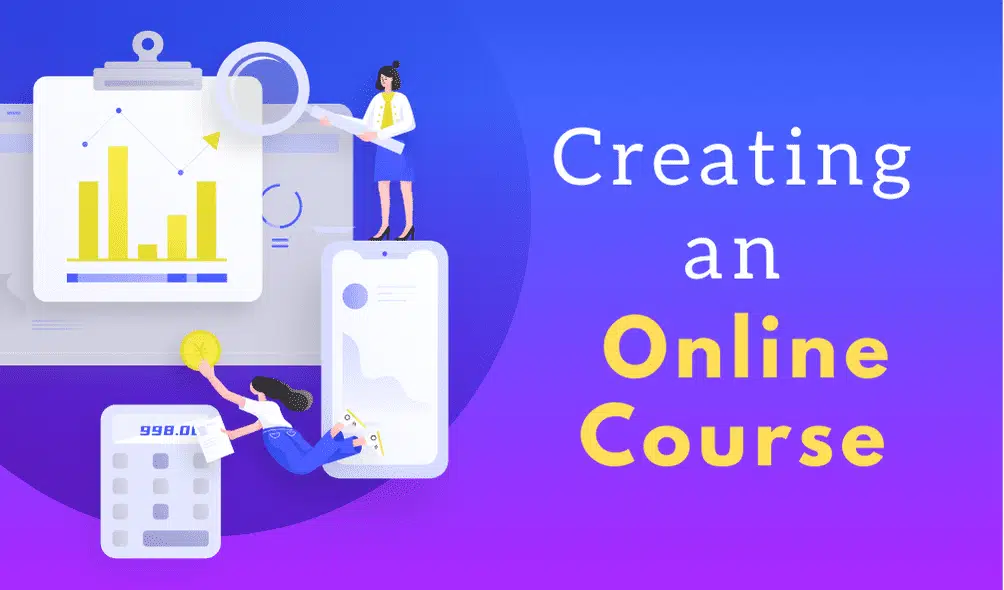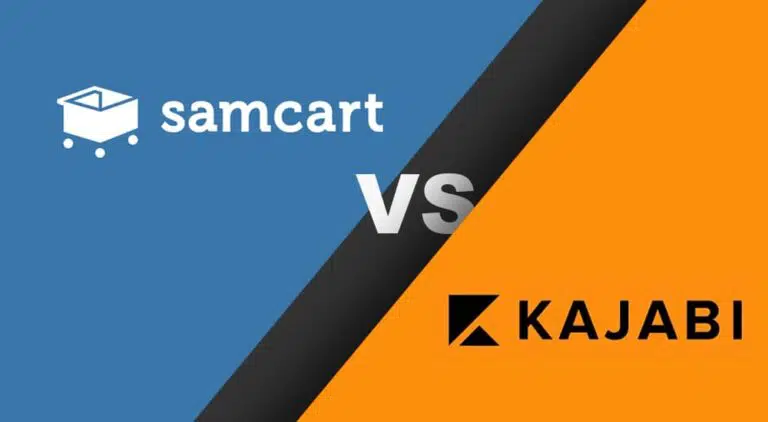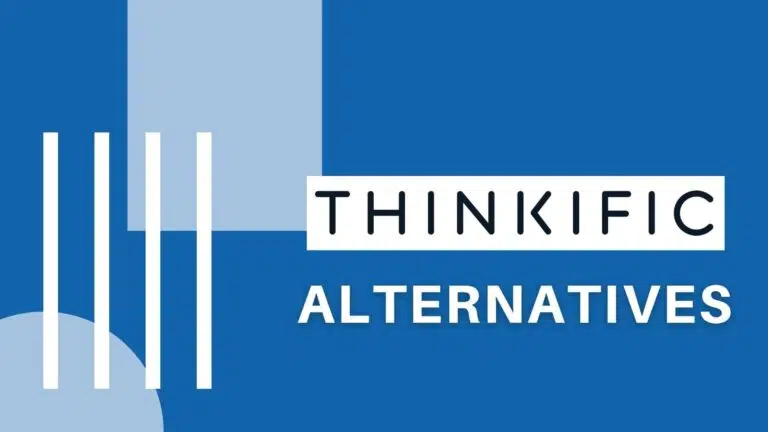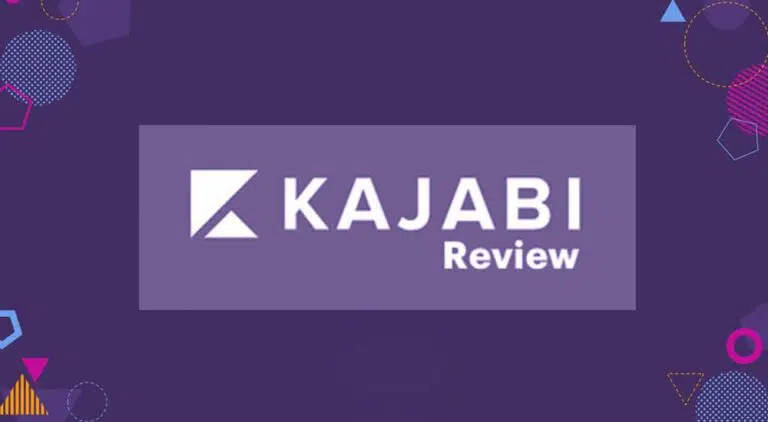Creating an online course (AKA an online training AKA an online education) and ensuring your idea sells can be a little frustrating especially if it’s your first time.
Over the years, creating and selling digital products online has evolved. We now have powerful and efficient tools, applications, and technologies that help us build, sell and manage online courses.
Back around 2005, digital courses were not popular as people were getting familiarized with digital marketing and sales.
Today, eLearning is a big sector on the internet. The global eLearning markets see a 30% annual market growth (these include China, India, and the Philippines) and as of 2020 mobile internet had grown by over 38 billion dollars.
People like online courses and are paying thousands of dollars for lessons from their favorite instructors and brands online. In fact, in September 2016, Melyssa Griffin of Melyssagriffin.com made 173,865 USD in eCourse sales.

That’s a huge market we’re looking at!
This guide will provide vital steps that you need to take to start, plan, and launch a successful online course.
Now, what’s an online course?
An online course is a training that is conducted over the internet. It’s a way to learn things online. This is mostly controlled, managed, and administered over an online learning management platform like Udemy, SkillShare, Teachable, Thinkific, LearnWorlds Kajabi, etc.
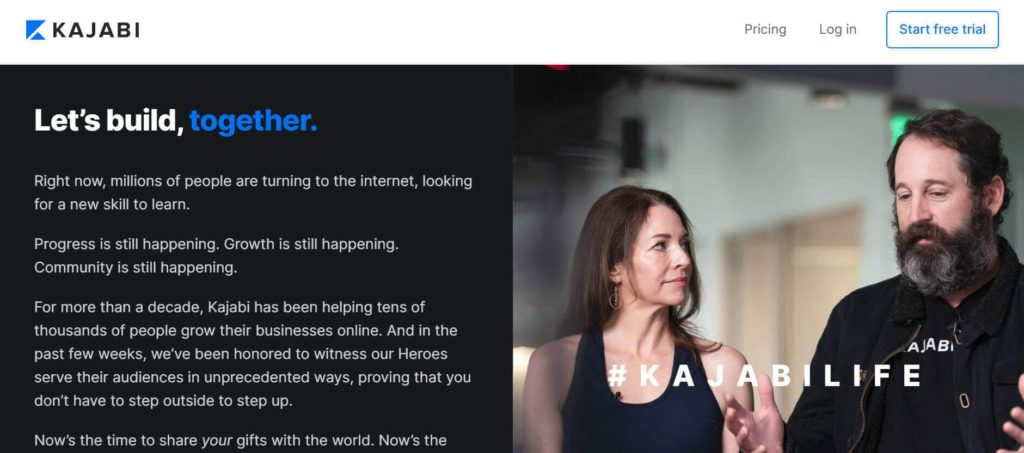
You may have asked several questions like;
“How can I create an online course for free?”
“Which software is best for online teaching?”
OR
“How much money does a Udemy instructor make?”
You will find many articles, videos, and guides explaining the process to create an online course. But with this detailed guide, we’ll simplify everything you need to do in four simple steps.
In basic terms, you simply teach your topic to a target audience on the internet. It’s one of the most impactful ways to pass your knowledge to people.
With a single platform, you could get millions of students and impact a lot.
Your course topic could be anything from how to fix BMW car tires, to building an Apple application.
Online courses are now available almost everywhere on the internet and entrepreneurs, experts, and influencers are paying huge sums to invest in them.
What are the Benefits of Creating Online Training Courses?
As discussed, there are several reasons you’d want to invest in creating an online course in 2022 and beyond.
We know that quite some people now trust online courses. Research shows that eLearning is the fastest growing industry in the education sector; growing by over 900% over the past two decades.
The obvious reason entrepreneurs go into creating online courses is to build an income or increase profitability for their businesses.
Creating courses can be as profitable if planned, launched, and managed well. Quite some entrepreneurs and bloggers make 5 to 6 figures from creating courses.
Now, what are some online courses and course creators?
Katie Kimball is the founder of the ‘Kids cook real food’ e-course’ and made $53,000.
Melyssa Griffin of Melyssagriffin.com made $258,108 in December 2016 and Adam Enfroy of Adam Enfroy of AdamEnfroy.com made $472,974.50 in course sales in 2021 alone with a 2-year old blog.
Online courses are undoubtedly profitable but another reason entrepreneurs invest in (creating) online courses is because it will help you build your brand and automatically position you as an expert in your industry.
Years back, when we created my first course, one of the major objectives was to help students pass the PMP exam. And we were able to achieve that.
The first course I created was a PMP Mock Test, and after that, I created several more.
Get the idea?
Digital courses are diverse which allows digital creators the flexibility to design and build online courses easily. Course creators can create training in any niche they feel there’s a need for.
Once there’s a high demand, and a target audience or customer then it’s profitable.
Instructors are teaching various topics like;
- Learn Python: The Complete Python Programming Course.
- Microsoft Excel 2013 Advanced. Online Excel Training Course.
- Introduction to Machine Learning for Data Science.
- The Secrets to Draw.
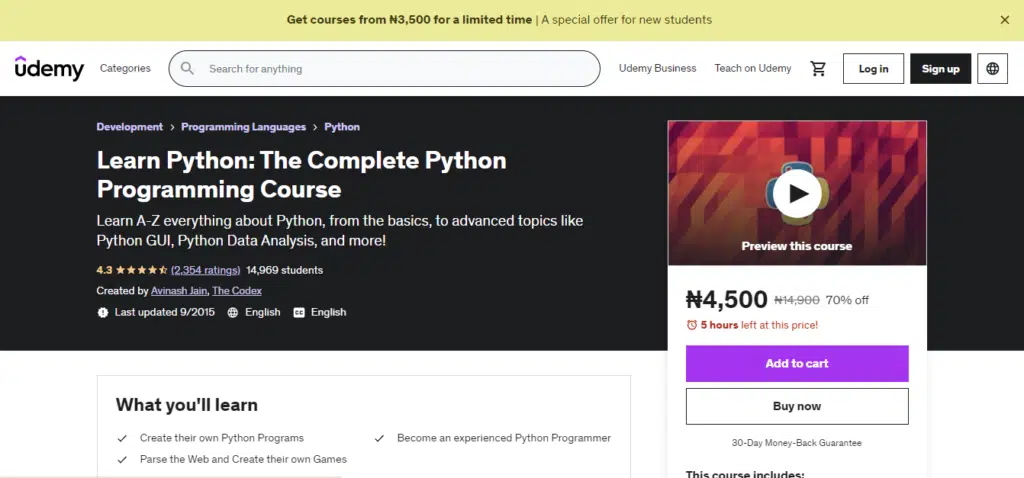
Teaching online courses allows flexibility to a great extent. I mean, unlike having physical classes, you can always schedule your classes yourself and plan how you (students) learn.
It allows comfort while learning because you can learn anything from your room, bathroom, or coffee shop. All students need is a device and an internet connection.
Experts have argued that this increases laziness in students a bit like too much comfort they say makes one dull!
Unlike physical classes, instructors can easily update and upgrade their content, classes, or training without much stress or having to break the bank.
You can easily build your brand through digital courses by finding a unique pain point, designing an ideal customer, and then creating a powerful class around it.
This guide will help you pick a course idea that has a high demand, how to create compelling offers, lead magnet, course lessons (video, text, email, audio), launching, and a unique presell strategy that I’ve used to launch a digital course that did well in sales.
As time progresses, your course may become popular, and your earnings will increase.
Now, to make this guide easy to read for you all, I’ve broken these into 4 easy steps you can follow to lay down your online course plan and launch in a few days.
How to Start and Create an Online Course in 4 EASY Steps!
There are so many steps and tasks that you need to take to plan, launch and sell an online course, but to reduce the overwhelm, here are the four (4) necessary steps to start selling digital courses online:
- Define Goals and Plan Course Strategy
- Research Course Outline.
- Build Engaging Content.
- Presell and Then Launch.
Now let me try to explain each step in the easiest way possible;
What are the 4 easy steps to building an online course?
#1. Define Goals and Plan Course Strategy
In online courses, education is carried out on the internet, you can develop courses and offer the recorded version or offer live virtual sessions.
To launch a successful online training course, you have to clearly define your goals and plan out your course strategy.
Ensuring you know how you want your course to be is a huge step.
Now unlike the millions of articles and guides on the internet, the first step here isn’t to research topics, demographics, or survey your target customer.
The first step is to know how to sell the course. I mean getting all the basic questions answered. Questions like;
- What is the pricing structure? Is it a recurring or one-time payment?
- Will it be video content, text, or audio format?
- What 2 online course instructors are doing what I want to do? This will help you create something better.
- What email marketing software would I use?
- How much can you invest in marketing?
- How will I market this course?
- What ways will you use to find the perfect topic ideas? Surveys, group forums (you can start by building the group now), and maybe even Facebook Ads (survey ads).
- What would my sales funnel be like? What software can I use? How much do they cost? Can I even afford this?
- Can I create my course for free?
- What’s the lowest amount I can use to start and launch my online training.
Get the idea?
This step is majorly a precautionary step to ensure you are aware of everything you’d be doing while planning and launching your course.
I’ve found that if you prepare for this, it’s easier to handle the challenges you might face especially if it’s your first time creating online courses.
This is you having an imaginative plan on how your course would be.
Having a laid down plan for your online course ensures that you have a solid foundation for your course. This means setting your business goals, marketing strategies, platforms to use, etc.
Now how do you set goals?
Let’s use the popular SMART approach to planning your goals. The SMART approach means Specific, Measurable, Achievable, Relevant, and Time-Bound.
Here’s a guide on how to leverage this system to set your goals.
But basically, you must set super-specific goals. Unlike setting a goal like “I’ll be rich”, use “My online course will be making $10,000 monthly by the end of December 2022”.
Your business goals must also be measurable. After a specific (set) time, you should be able to check and analyze your growth and how far you’ve gone in attaining your life or business goals.
Next, your goals must be achievable. You see, you could set a goal like “I’ll make $100,000,000,000 in 1 day selling my course”. But that is not realistic.
Your goals should be relevant and tied to your expectations.
Finally, you must specify how you plan to achieve these goals. I mean certain tasks you’ll complete to attain your goal. Now, these tasks must have a frequency to which you’ll complete them (tasks).
#2. Research Training and Create Course Outline
In the second step, you should focus on getting the course outline ready. Here, we’ll show you how to research your course idea, find topic ideas, and how to design a course outline.
This can be a bit overwhelming especially if you’re just starting with your first online course.
First, put down your industry. This could be finance, marketing, technology, or the health industry.
Afterward, do detailed research on the interest of your audience. This step simply ensures that your course idea has high market demand.
I mean, no one wants to create a course no one wants to pay for.
Unlike most experts, I wouldn’t advise you to pick a topic idea before conducting market research to see if people would pay for it or not.
Go on social networking websites and search for keywords and phrases in your space. Look for questions your target customers are asking in forums and community platforms.
Platforms like Quora and Reddit are my go-to for finding lucrative ideas for my content.

You should have a list of questions from people. Find common unsaturated questions and select the topic you have knowledge of.
Now here’s the thing;
A saturated topic can also have a sweet spot for you. Simply look for the gap your competition is leaving out.
For your topic idea, ask yourself if someone would want to pay for it. Are people searching for it? Is it a common problem I could help people with?
Once you answer these, you should have many course topics to create your course.
At this stage, please don’t pressure yourself for a perfect course topic or title. This could change or adjust as you are planning your course outline, or creating the course content.
You can also use surveys to get ideas from your target customers.
For me, I used Google Forms to create a poll for my audience and then sent it to influencers, shared on social media, and also to my newsletter.
Another powerful tool is the Google Keywords Planner. This tool helps you find the number of particular searches on Google. It’s such a powerful tool and here’s a quick guide on how to verify your online course idea using the Google Keyword Planner (GKP).
Head over to Google Keyword Planner and sign in.
Click on Discover New Keywords and put in the keyword you want to check. For the guide, I’ll use “how to produce a beat in a studio”.

Click on Get results and you will see the search volumes and related keyword ideas.
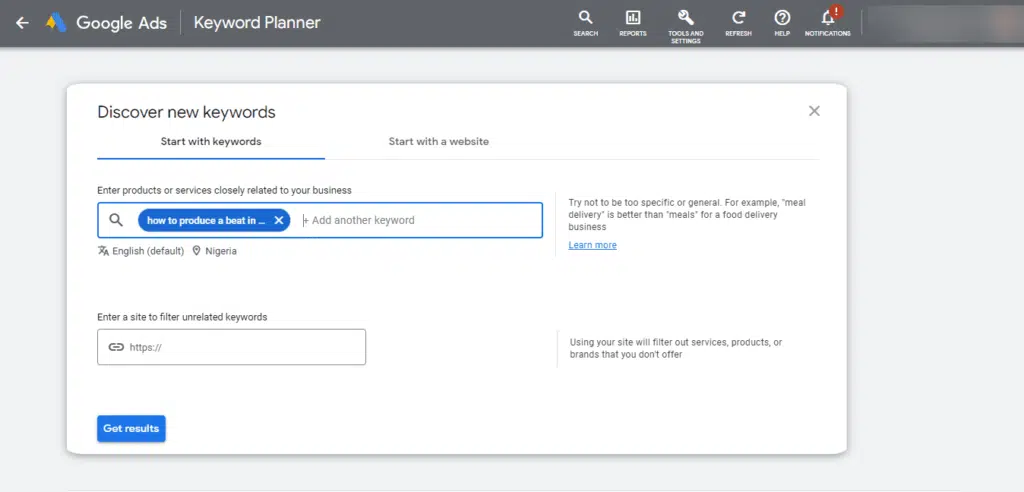
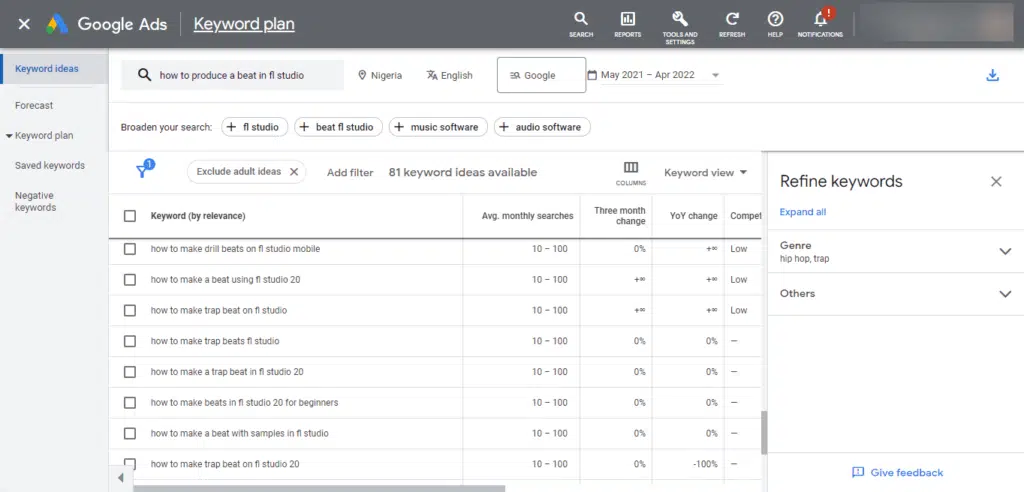
Now after getting a course topic, the next thing is to identify your target buyer. This is simply an imaginative profile of a perfect customer for your course. This is called a customer buyer profile and must be specific. It must include information about your customer like;
- Age
- Location
- Likes & Dislikes
- Employment status
- Education
Now creating an outline for your course helps you decide and plan all the things you want to share in your article. This is where you select the sub-topics and pain points you want to discuss in your course.
An idea I got from my mentor was to answer a particular question in every chapter of my course.
During my research, I always put down questions that I find on the internet. I pick the more common and important ones then I turn them into chapters.
And some questions, I turn into sub-topics that are discussed in various chapters.
#3. Build Engaging Content
Now once you’ve planned your course, researched a lucrative course topic, and designed a great course outline, the next thing is to begin building your content.
This is a huge and time consuming process.
Your course content is the backbone of your course sales. If you work greatly to produce mediocre content, then expect your course to yield mediocre results. But if you invest great effort in developing powerful content, you will have happy customers always waiting for your new product.
After you’ve come up with a topic idea and a plan, you should begin building up your course content.
Whether or not you decide to create a video, written, or audio content, you must invest good time to ensure you pack as much value as possible. Craft your content carefully and add interactive elements to your content.
To create great course content, you must systematically plan out your knowledge in a way your target audience will sincerely appreciate.
To get the attention of potential customers, you can teach something for free. This is one strategy I see almost all course management platforms and course creators use; they give good and valuable content for free.
Here’s what I mean…
Course creators use this strategy to find, sell, and attract potential customers.
Knowing alone will not sell the product. You must design and deliver the course in a way that students like your products and keep coming back for more.
Keep your content super engaging and use stories a lot. Package your knowledge in an interesting manner or format.
Stories are powerful and can help your brand deliver your messages effectively. When you give stories, you give people one thing to hold on to.
People remember stories and you should pay attention to them.
Students tend to forget the strategies you teach them but will never forget the stories you tell them. Space your content into headings and subheadings to help your students understand your lessons better.
And at the end of each module, you should presell the next module.
At the end of module 1 should pitch the knowledge taught in module 2 and module 2 should introduce or sell the idea in module 3 and so on.
This helps keep your customers consuming your course content which would increase your course’s success.
#4. Presell and Then Launch
After you’ve designed your course and built your course content, you need to devise a strategy to begin getting your first batch of students for your course.
This step also helps you in validating your course idea and will help you ensure people would pay for your knowledge.
Before launching and selling your course, a good idea is to pre-sell your course idea to find hidden trends in what you teach. Pre-selling your course idea will confirm that there’s a demand in that topic or area.
When I got started, I wasn’t so sure if I should pre-sell my course or not. I was afraid of launching a course no one would buy, and I was thinking about the entire journey I’ll have to go through if I was to pre-sell my course.
But in short, I was able to plan a little pre-sell that I did to my email subscribers and in 24 hours I had about 2 dozen people who had already signed up for the pre-sell.
How did I do it?
I created a survey and asked my followers and email subscribers to provide feedback. The audience participated in the survey and get the course at a pre-sell fee.
This helped my students save a little, and also ensured my idea was a lucrative one.
What I did was I created a 3-part email marketing sequence that simply enlightened my audience (subscribers) on my course prep and what they get by registering for the course.
The first email introduced the course idea and the whole story behind the course launch (always remember to tell stories). I introduced myself, and what the pain points the course will solve.
The second email focused on my story again. But this time, I explained how I used the strategies in the course; I mean, how the strategies in the course have worked for me.
For my course, I was teaching students how to start and grow a $1,000 per month business so this email narrated exactly how I was able to do that.
Pre-selling your course is a great way to avoid a situation where no one buys your course. You’re confirming your idea before it’s even live.
I’ve seen a couple of expert content creators pre-sell courses and do good numbers – this made me apply it during my course launch as well.
Some content creators make the mistake and think once they research a topic and build content around it then it’ll make them thousands of dollars but that’s not the case. You see, with digital marketing, you can’t assume that working with facts and numbers is what will help you grow your business so you might want to test your product before taking it live.
Huge companies use this strategy too and it yields millions of dollars in product pre-sales.
Some pre-sell strategies are;
- Give special packages to students who join during pre-sell.
- Partner with niche influencers to increase sign-ups.
- Let students who sign up take surveys and answer questions like; “what do you hope to learn with this course?”, or “what’s your current position with ___?”
- Use social media to increase sign-ups too.
- Your email newsletter is your biggest asset during pre-sell.
After the pre-sell period, the next thing is to launch. There’s a unique way to launch training programs that work.
Leverage influencer marketing.
How?
Reach out to niche influencers (who I’ve built relationships with), tell them about your course and offer them a chance to partner with you.
Now because these are influencers, try to give them a variety of partnership options they can select from.
Find influencers with good followers, and offer them your course at a cheaper rate if they tell their community about it. Maybe you can offer discounts to all students that come from his community.
Get the idea?
If you pick the right launch strategy, you can attain crazy results on your launch. For you to have a great course launch, you must blow your audience’s mind and give them what they want.
Unlike before, you can write a few promotional emails here and there and expect some sales. Today, you must properly plan and effectively apply certain strategies to have a good launch.
Sometime in the past, Luis of Luisazhou.com did a launch where they spent over $150,000 on advertising and they made $800,000 back. That’s how crazy a course launch could do in numbers.
With your course, you can launch your lessons to a list (that you’ve built already) or do a no-list launch. You can use affiliates, paid ads, and blog traffic to launch and sell your course.
Now keep the following in mind for your product launch;
- Live events like a webinar are a great launch method.
- Use lead magnets to attract people and build buzz around your course launch.
- Consider using affiliates to promote your course.
- Ensure you have a laid-down marketing funnel for the course before launch.
- Go for podcast interviews.
- Pay close attention to analytics.
- Run weekly Question and Answer sessions for your students.
- Turn short lessons to lead magnets and promote them on your website.
- Provide onboarding lessons.
- Focus on building a community around your course.
- Consider paid ads.
- Never forget UPSELLS!
- Don’t be afraid to fail.
Now, when should you launch your online course?
There’s no perfect time to launch your online course but it depends on the type and nature of the course you want to publish.
Selecting a month to launch your course completely depends on your audience. This doesn’t matter but what I’ve noticed most course creators do is they tend to do their course launch during big public holidays. But in all, this depends on your entire course type and plan.
Now, Which Software is Best for Online Teaching? Which Platform is the Best Online Learning Platform?
Are you looking for where to host your online course?
What are some of the best platforms to host and manage your online courses?
Now to answer your questions, there isn’t a single online learning platform that is the best. Rather, it depends on the nature of your course and how you plan to sell it.
To be able to select and use the best platform to host your online course, you must identify all the critical details about your online course business. It will help you be clear on what features you’d need as there are lots of different features with different platforms.
But here are our top five (5) online learning management platforms:
Have you created an online course before or do you plan to start one?
Do you already have a topic idea?
What are you facing difficulty with?
Let me know in the comments section!

